From inside (document excerpt):
User and Operator’s Vehicle Manual for 2001 GMC Yukon and Yukon XL.
- The GMC Yukon refers to the basic platform used in both long and short versions of the truck chassis:
- Chevrolet Tahoe (GMC Yukon)
- Chevrolet Suburban (GMC Yukon XL). Formerly known as GMC Suburban
How to Use this Manual: Many people read their owner’s manual from beginning to end when they first receive their new vehicle. If you do this, it will help you learn about the features and controls for your vehicle. In this manual, you’ll find that pictures and words work together to explain things quickly.
Free Auto PDF Owners Manual Download.
Table of Contents
Section1 Seats and Seat Controls Safety Belts
Seats and Restraint Systems
Air Bag Systems
Restraint Systems for Children
Section2 Windows
Keys and Door Locks
Keyless Entry System (If Equipped) Liftgate
Automatic Transmission
Four-Wheel Drive (If Equipped) Parking Brake
Tilt Wheel (If Equipped)
Turn Signal/Multifunction Lever Windshield Wipers
Cruise Control
Features and Controls
Exterior and Interior Lamps
Mirrors
Storage Compartments
Convenience Net/Cargo Cover/Luggage Carrier (If Equipped) Accessory Power Outlets
OnStar® System (If Equipped)
Sunroof (If Equipped)
HomeLink® Transmitter (If Equipped)
Instrument Panel, Warning Lights and Gages
Message Center
Comfort Controls and Audio Systems
Section3 Heating and Air Conditioning
Setting the Radio Clock Radio/Cassette Player/CD Player
Radio Theft-Deterrent Feature (If Equipped)
Your Driving and the Road
Section4 Your Driving, the Road and Your Vehicle
Defensive Driving
Drunken Driving
Control of a Vehicle
Braking
Steering
Driving Tips for Various Road Conditions Off-Road Driving
Recreational Vehicle Towing
Loading Your Vehicle
Towing a Trailer
Section5 Hazard Warning Flashers Jump Starting
Towing Your Vehicle
Problems on the Road
Engine Overheating Changing a Flat Tire If You’re Stuck
Section 6 Fuel
Checking Fluids and Lubricants
GM Oil Life System™
Engine Air Cleaner/Filter
Passenger Compartment Air Filter (If Equipped) Brakes
Bulb Replacement
Section 7
Service and Appearance Care
Windshield Wiper Blade Replacement Tires and Wheels
Appearance Care
Electrical System/Fuses and Circuit Breakers Capacities and Specifications
Normal Maintenance Replacement Parts
Maintenance Schedule
Scheduled Maintenance Recommended Fluids and Lubricants Owner Checks and Services Maintenance Records Periodic Maintenance Inspections
Customer Assistance Information
Section8 Customer Satisfaction Procedures
Customer Assistance Offices
Roadside Assistance and Courtesy Transportation
Warranty Information (See Warranty Manual) Reporting Safety Defects on page 8-10 Service Publications
Index
Section9
Service Station Guide
Cooling System See Section 5
Tire Pressure See Section 6 For
a More
Detailed Look at What’s Under the Hood See Section 6
Hood Release See Section 6
Spare Tire Pressure See Section 5
Windshield Washer
BatteryFluid See Section 6See Section 6
Engine Oil Dipstick See Section 6
Fuel
Oil Viscosity Engine Oil
See Section 6
Use unleaded only. See Section 6
for octane ratings.
Section 1 Seats and Restraint Systems
Here you’ll find information about the seats in your vehicle and how to use your safety belts properly. You can also learn about some things you should not do with air bags and safety belts.
1 -2 Seats and Seat Controls
1-15 Safety Belts: They’re for Everyone
1-20 Here Are Questions Many People Ask About Safety Belts – and the Answers
1-21 How to Wear Safety Belts Properly
1-21 Driver Position
1-27 Safety Belt Use During Pregnancy
1-28 Right Front Passenger Position
1-28 Air Bag Systems
1-37 Center Passenger Position
1-38 Rear Seat Passengers
1-42 Rear Safety Belt Comfort Guides for Children and Small Adults
1-45 Children
1-49 Restraint Systems for Children 1-62 Older Children
1-65 Safety Belt Extender
1-65 Checking Your Restraint Systems 1-65 Replacing Restraint System Parts After a Crash
Section 2 Features and Controls
Here you can learn about the many standard and optional features on your vehicle, and information on starting, shifting and braking. Also explained are the instrument panel and the warning systems that tell you if everything is working properly – and what to do if you have a problem.
2 -2 Windows 2-33
2-4 Keys 2-34
2-5 Door Locks 2-35
2-9 Keyless Entry System (If Equipped) 2-35
2-13 Theft 2-36
2-14 Content Theft-Deterrent (If Equipped) 2-43
2-15 PasslockR 2-47
2-16 New Vehicle “Break In” 2-48
2-16 Ignition Positions 2-53
2-17 Starting Your Engine 2-60
2-19 Engine Coolant Heater (If Equipped) 2-63
2-20 Automatic Transmission Operation 2-66
2-24 Four-Wheel Drive (If Equipped)
2-28 Parking Brake 2-68
2-29 Shifting Into PARK (P) 2-69
2-32 Shifting Out of PARK (P) 2-84
2-32 Parking Over Things That Burn
2-33 Engine Exhaust
Section 3 Comfort Controls and Audio Systems
In this section, you’ll find out how to operate the comfort control and audio systems offered with your vehicle. Be sure to read about the particular systems supplied with your vehicle.
3 -2 Comfort Controls
3-3 Heater and Air Conditioning Comfort Controls (If Equipped)
3-5 Electronic Climate Control System (If Equipped)
3-11 Air Conditioning
3-12 Heating
3-12 Defogging and Defrosting
3-12 Rear Window Defogger (If Equipped)
3-13 Ventilation System
3-15 Audio Systems
3-15 Setting the Clock for Systems with SET Button
3-15 Setting the Clock for Systems with HR and MN Buttons
3-15 AM-FM Stereo
3-17 AM-FM Stereo with Cassette Tape Player (If Equipped)
3-19 AM-FM Stereo with Cassette Tape Player and Automatic Tone Control (If Equipped) 3-24 AM-FM Stereo with Compact Disc Player and Automatic Tone Control (If Equipped) 3-28 Rear Seat Audio (If Equipped)
3-29 Remote Cassette Player (If Equipped) 3-31 Theft-Deterrent Feature (If Equipped) 3-33 Understanding Radio Reception
3-33 Tips About Your Audio System
3-34 Care of Your Cassette Tape Player
3-35 Care of Your Compact Discs
3-35 Care of Your Compact Disc Player
3-35 Fixed Mast Antenna
Section 4 Your Driving and the Road
Here you’ll find information about driving on different kinds of roads and in varying weather conditions. We’ve also included many other useful tips on driving.
4 -2 Defensive Driving
4-3 Drunken Driving
4-6 Control of a Vehicle
4-6 Braking
4-9 Traction Assist System (Option)
4-11 Steering
4-13 Off-Road Recovery
4-14 Passing
4-15 Loss of Control
4-16 Off-Road Driving with Your Four-Wheel-Drive Vehicle 4-31 Driving at Night
4-32 Driving in Rain and on Wet Roads 4-35 City Driving
4-36 Freeway Driving
4-37 Before Leaving on a Long Trip 4-38 Highway Hypnosis
4-38 Hill and Mountain Roads
4-40 Winter Driving
4-44 Recreational Vehicle Towing 4-46 Loading Your Vehicle
4-50 Towing a Trailer
Section 5 Problems on the Road
Here you’ll find what to do about some problems that can occur on the road.
5 -2 Hazard Warning Flashers 5-11 Cooling System
5-2 Other Warning Devices 5-17 Engine Fan Noise
5-3 Jump Starting 5-17 If a Tire Goes Flat
5-8 Towing Your Vehicle 5-18 Changing a Flat Tire
5-8 Engine Overheating 5-34 If You’re Stuck: In Sand, Mud, Ice or Snow
Section 6 Service and Appearance Care
Here you will find information about the care of your vehicle. This section begins with service and fuel information, and then it shows how to check important fluid and lubricant levels. There is also technical information about your vehicle, and a part devoted to its appearance care.
6 -2 Service
6-3 Fuel
6-5 Fuels in Foreign Countries
6-5 Filling Your Tank
6-8 Filling a Portable Fuel Container
6-8 Checking Things Under the Hood
6-13 Noise Control System
6-14 Engine Oil
6-18 Engine Air Cleaner/Filter
6-20 Passenger Compartment Air Filter (If Equipped)
6-21 Automatic Transmission Fluid
6-25 Rear Axle
6-25 Four-Wheel Drive
6-27 Engine Coolant
6-30 Coolant Surge Tank Pressure Cap
Wikipedia’s page for GMC Yukon
GMC official web site


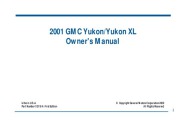 2001 GMC Yukon XL Owners Manual, 2001 - 1 of 417
2001 GMC Yukon XL Owners Manual, 2001 - 1 of 417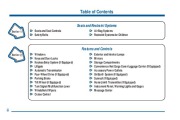 2001 GMC Yukon XL Owners Manual, 2001 - 2 of 417
2001 GMC Yukon XL Owners Manual, 2001 - 2 of 417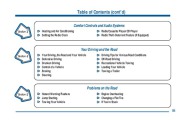 2001 GMC Yukon XL Owners Manual, 2001 - 3 of 417
2001 GMC Yukon XL Owners Manual, 2001 - 3 of 417 2001 GMC Yukon XL Owners Manual, 2001 - 4 of 417
2001 GMC Yukon XL Owners Manual, 2001 - 4 of 417 2001 GMC Yukon XL Owners Manual, 2001 - 5 of 417
2001 GMC Yukon XL Owners Manual, 2001 - 5 of 417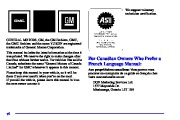 2001 GMC Yukon XL Owners Manual, 2001 - 6 of 417
2001 GMC Yukon XL Owners Manual, 2001 - 6 of 417 2001 GMC Yukon XL Owners Manual, 2001 - 7 of 417
2001 GMC Yukon XL Owners Manual, 2001 - 7 of 417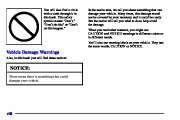 2001 GMC Yukon XL Owners Manual, 2001 - 8 of 417
2001 GMC Yukon XL Owners Manual, 2001 - 8 of 417 2001 GMC Yukon XL Owners Manual, 2001 - 9 of 417
2001 GMC Yukon XL Owners Manual, 2001 - 9 of 417 2001 GMC Yukon XL Owners Manual, 2001 - 10 of 417
2001 GMC Yukon XL Owners Manual, 2001 - 10 of 417